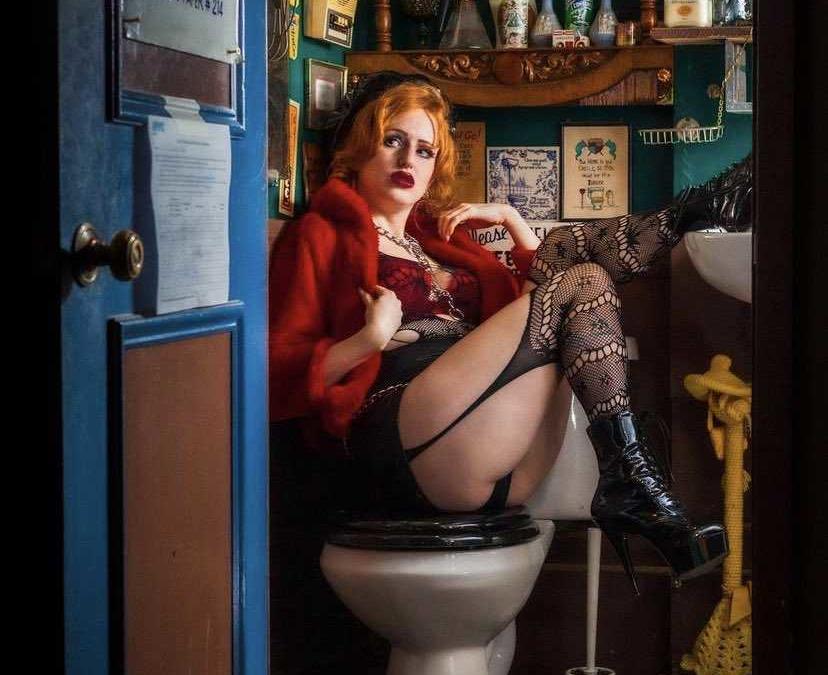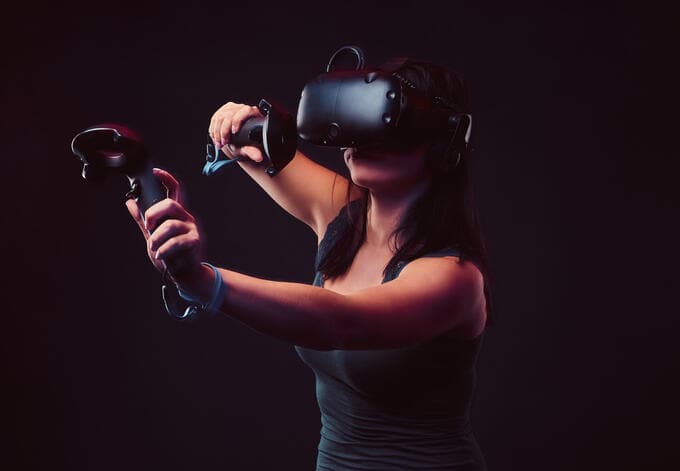“I spent years wanting to do ageplay but either wasn’t around people I trusted enough to engage in it with or I was embarrassed. Even among kinksters, DDlg gets kind of frowned on. But once I started it just clicked. I loved it so much,” says Maggie McMuffin, a 31-year-old who describes herself as having been “an out and out babygirl” for several years.
“I was a child who spent a lot of time alone, caring for myself, and having to be mature for my age,” she says, adding, “Once I got to college and started exploring kink, I gravitated towards being submissive because it was important for me to have some time where I wasn’t in charge of everything and my brain could switch off, even for an hour.”
McMuffin found pleasure in engaging in DDlg dynamics – also known as Daddy Dom/ little girl. It’s a form of power exchange role play that grew out of BDSM and usually involves one partner taking a caregiver role and the other acting as a submissive, or “little.” Through role play with a caretaker, littles are able to tap into an emotional state of Little Space, where they feel more child-like and carefree. Despite the gendered nature of the name, caregivers and littles can be of any gender.
It’s important to note everyone involved in DDlg is an adult in real life and has nothing to do with interest in actual children. McMuffin says, “lgs dress younger, in a certain style that is evocative of youth, but honestly not 100 percent how actual children dress. But there is lots of coloring and stuffed animals.
“While it obviously has to do with ageplay, I don’t think the age regression is the key element to this dynamic,” she adds, “There have been plenty of times when my Daddy would treat me also as an adult and I would act as an adult, but they guided my daily life or encouraged me to do the unfun bits of adulting (like admin work and drinking water). Then in the bedroom they were the one in charge and there was a reward/punishment system.
“At one point I had three core daddies, a mommy, and play partners I’d engage in similar dynamics with,” she says, adding that “the specifics for each partnership were different. You’ve got nice daddies, mean daddies, daddies with vibes more reminiscent of an early Lana Del Rey song…And I had daddies who were more into age play with me vs. ones who just liked being a paternal figure.”
For some, these power exchange dynamics are highly erotic, for others it’s more of a lifestyle. On DDlg social media sites like DDlgfriends, members seek partners, share memes, talk about the intricacies of their relationships or just post pics of their daily lives.
“I love stuffed animals, pink sparkly things, hyper-feminine aesthetics,” says 42-year-old self-described “bratty girl” Starlight. She says her caregiver, whom she calls Sir, enjoys being more “serious and grown-up than I am – and we find a lot of joy and playfulness and intimacy within that push-pull.
“I love all things cute and I really enjoy being able to freely embrace my natural affinity for everything girly and sweet,” she says, adding, “And he enjoys being able to take me in hand, act as a guide and leader… Sexually? It’s super fun to be able to play with themes of innocence and corruption in our scenes – and that’s definitely enhanced by my girly side.”
Starlight says she recognized she was kinky at a young age. “I used to act out BDSM scenes with my Barbie dolls, although I didn’t have the words for it then.” She says her scenes with her Sir, to whom she is married, “look very much like other BDSM scenes, but my leathers are baby pink (custom made for me as a gift from my Sir) and our ropes are rainbow-dyed.
“I still get flogged, I still take pain, I still suck cock – but he calls me ‘little girl’ or ‘princess’ while I’m doing so and that pushes me deeper into subspace than the usual black-and-red-Master-slave-cliched-kink ever could,” she says, adding that her Sir “loves the feeling of taking someone sweet and innocent and making me do depraved, delightful, things for him. I think that some DD/lg people use more age-play elements such as bottles, pacifiers, and overt age roleplay. We don’t do that, but what we do is deeply satisfying for us.”
How do mental health professionals view these dynamics? According to Stefani Goerlich, certified sex therapist and founder and Clinical Director of Bound Together Counseling, “Many clinicians do not understand caregiver/little dynamics.” Because few counselors receive training in sexuality and even fewer in kink, Goerlich says clinicians “tend to assume that these relationships represent a form of regression on the part of the little, codependency for both partners, and expressed concern about unhealthy boundaries between the Little and their caregiver.”
She says caregivers and littles face stigma from both in and outside of the kink community. “There are still misperceptions about caregiver/little kink as a form of sublimation of desires that might otherwise be socially unacceptable or even criminal,” she says, adding:
“I have never met a Caregiver Dom who is truly interested in sex with children. This stereotype is unfounded and cruel and can do great harm when acted upon by community members or mental health professionals.”
Instead of adding to the stigma, Goerlich, who is the author of “The Leather Couch: Clinical Practice with Kinky Clients,” says clinicians can be helpful for folks in DDlg dynamics in doing boundary setting and balancing the joy of Little Space with real world responsibilities, much like they would for clients in a vanilla relationship.
“People who are drawn to these dynamics enjoy power exchange relationships that feel more nurturing, supportive, and playful, rather than focusing on the strict hierarchy and dark aesthetic themes often found in ‘mainstream’ BDSM.”
Stefani Goerlich
“Many of them enjoy aspects of childhood play and child-like behavior and appreciate being able to weave these into their power exchange in ways to feel normal, natural, and joyful for them,” she continued.
Asked whether DDlg dynamics would be considered a coping strategy, Goerlich says they are, “in the same way where any supportive partnership helps us cope with the trials and tribulations of daily life.” She adds, “When mutual affection and support are present in a relationship, we are better able to cope with what life throws at us.”
When it comes to being a Daddy Dom, 35-year-old Jake says that for him, DDlg is an extension of his natural inclination to be a caretaker.
“I can look back and see ways in which it was always present in relationships to an extent, sort of an energy I give off.” He recalls, “half-joking with a partner once when we went to the grocery store that I’d let her pick ‘one thing out as a treat’ and she shot off to the candy aisle. For the next two years we dated, that was a thing she looked forward to doing every time we went.”
He describes the process of organically introducing DDlg elements into relationships. “I generally let it come up in subtle ways, it can be a divisive topic if rushed into. Humor can be a great way to feel it out. I’ve strategically made nonsensical comments like, ‘Your mother and I are so proud’ to gauge how such things land before bringing it up.”
For someone who might be interested in trying these dynamics in their life, Jake says, “Don’t get bogged down in the specific details of what goes on in the bedroom with it, enjoy playing with the energy in more wholesome situations – that’s part of the fun.”
Have a question for Dr. Timaree? Send an email to [email protected].





